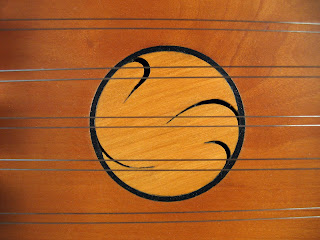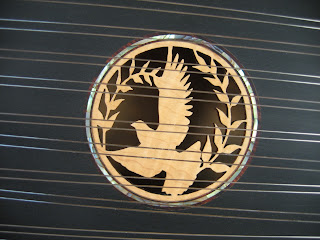The Yangqin
I have always been fascinated by the Chinese yangqin. In the world of trapezoidal instruments struck by “hammers”, the contemporary yangqin rivals the cymbalom in its range and complexity. The yangqin is a relative newcomer to Chinese music. The instrument’s name provides a clue that it originated from abroad—yang means “foreign” and qin is the ancient Chinese plucked zither. Although originally thought to have been introduced to the Chinese by the Persians through the Silk Road, more recent research by Paul Gifford in his book The Hammered Dulcimer, A History suggests that the instrument was brought by European sea merchants to south China in the eighteenth century. The traditional yangqin’s shape, diatonic tuning, and long hammers held between thumb and index finger suggest that they were influence by the hammered dulcimers of Europe, rather than the Persian santur. The instrument initially was a fairly simple fan shaped affair with a range of only eight treble courses and eight base courses probably strung with brass. During the 1960s the instrument evolved into models having two, three, four and sometimes five main bridges greatly extending its range . Steel and copper wound strings with as many as five strings per course were introduced in order to give the instrument more resonance and volume. The playing hammers are made of flexible bamboo with a half moon head covered by rubber. The rubber side produces a softer sound and is used most frequently. When a crisper, more percussive sound is needed the hammer is flipped striking the strings with the bare bamboo. The ends of the hammers are sometimes used to pluck the instrument as well.
As the yangqin is a type of hammered dulcimer, it shares many elements of construction with other instruments in the hammered dulcimer family. Some unique features include its tuning scheme, the construction of its bridges, a fairly open back, cylindrical metal nuts that can be moved for fine tuning, and a hinged cover which is opened to access the tuning pins. It seems that most yangqin are manufactured and in quantity as the instrument is quite popular. Models vary in size, range and quality. They usually include an ornate folding stand.
Tuning
The yangqin is a chromatic instrument with a range of slightly over four octaves. Middle C is located on the tenor bridge, third course from the bottom.
The pitches are arranged so that in general, moving one section away from the player's body corresponds to a transposition of a whole tone upwards. Similarly, moving one section towards the left of the performer generally corresponds to a transposition of a perfect fifth upwards. These are only rules of thumb since the arrangement has to be modified towards the extremes of the pitch range to fill out notes in the chromatic scale. Such an arrangement facilitates transposition.
There are usually four to five bridges on a yangqin. From right to left, they are: bass bridge, "right bridge", tenor bridge, "left bridge", and the chromatic bridge. During playing, one is supposed to strike the strings on the left side of the bridges. However, the strings on the "chromatic bridge" are struck on the right, and strings on the "left bridge" can be struck on both sides of the bridge.















